Virtual Reality Facts & Stats
- There are more than 170 million people worldwide who today use some form of VR
- Experts estimate that around 500 million VR headsets will be sold by 2025.
- VR and AR together could help boost the global economy by $1.9 trillion by 2030.
- About 77% of customers say they need more social interaction in VR.
- China topped the list of the biggest investors in VR at a cost of $5.8 billion.
- Trends in virtual reality show that 70% to 75% of users aged 16 to 44 are aware of augmented reality.
- About 60% of customers would happily spend $400 or less on a VR set.
- 78% of Americans are already familiar with VR technology.
- According to a recent VR trends report, around 77% of gamers who use AR and VR prefer consoles.
The world is moving towards Virtual Reality. One of the major factors driving this change is that many people are getting access to high-quality virtual reality headsets. The number of VR headsets in 2024 was predicted to be over 66 million, which is a great thing for the growth of virtual reality.
Come let’s explore these 17 eye-opening stats about Virtual Reality in 2024 to see how VR will shape the future.
General Statistics on Virtual Reality

1. Overall 55% of users are satisfied with VR
(Source: AR Insider & Greenlight Insight)
A study found that VR has been conducted and the results have been published. The study focused on measuring the satisfaction of users of virtual reality (VR) products. They found that 55% of users are satisfied with VR, 27% are somewhat satisfied, 17% are neutral, and 5% are not satisfied at all.
The study also found that higher levels of education correlate to higher levels of satisfaction with VR, as well as more frequent usage. Satisfaction correlates negatively with age, suggesting that older people might not be as able to adapt to this new technology. Younger generations have already grown up in a digital world and therefore might be more likely to adapt easily to this new technology.
2. Trends in virtual reality show that 70% to 75% of users aged 16 to 44 are aware of augmented reality.
(Source: Linchpinseo)
Augmented reality is one of the most interesting and promising technologies on the horizon. A recent study has shown that over 75% of users aged 16 to 44 are aware of augmented reality, with over 50% saying they are “very interested.” With increased awareness and interest, it is predicted that AR will soon become a part of our everyday lives.
The possibilities for AR are endless: educators can use AR through headsets, museums can offer AR guided tours, or shopping malls can provide customers with exclusive deals by scanning their items in the store. There’s no limit to what we could do with this technology!
3. More than 50% of consumers who have tried VR have experienced motion sickness.
(Source: VR Heaven)
Virtual Reality is an immersive experience that is still in its infancy. It has the potential to revolutionize our world but it also has some bugs and risks that need to be addressed. VR can be nausea-inducing for some people, which is a major problem for those who are prone to motion sickness.
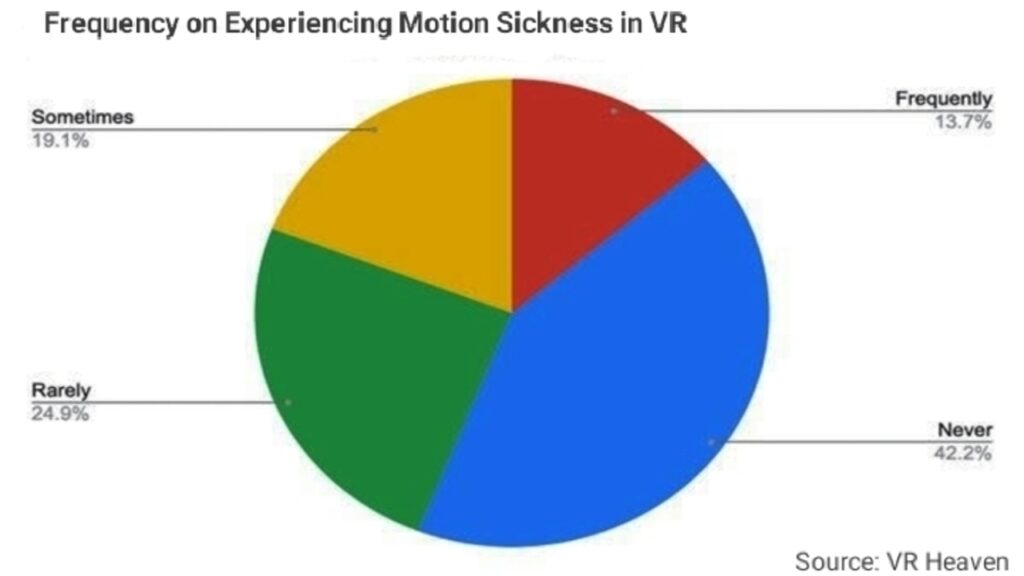
According to a recent study, more than 50% of users who have tried VR have experienced motion sickness. Of the people who have experienced VR motion sickness, only 13.7% of them feel it frequently while 19.1% experience it sometimes; 24.9% go through the feeling rarely and 42.2% say they’ve never experienced this in their lives.
In order to avoid these negative side effects, it’s important to stay hydrated, take breaks from using VR, and develop a sense of self-awareness when using the product.
4. According to a recent VR trends report, around 77% of gamers who use AR and VR prefer consoles.
(Source: KommandoTech & Statista)
Augmented Reality (AR) and Virtual Reality (VR) technology is evolving. It’s being used for gaming, work, and education. As the technology evolves, so does the preference for its use.
How do gamers use AR and VR? A recent study found that overall 77% of gamers who are currently using AR or VR prefer to play on consoles. Of those surveyed, 59% plan to continue playing games on consoles in the next 12 months.
While this statistic may be surprising at first glance, it actually makes sense when you consider the genres that are popular on consoles. The most popular games on the console are action-adventure games like Kingdom Hearts III and Assassin’s Creed Odyssey. However, overall game sales have been trending downwards recently with a reported drop of 10% in 2018 alone according to data from Statista.
Virtual Reality Usage Statistics
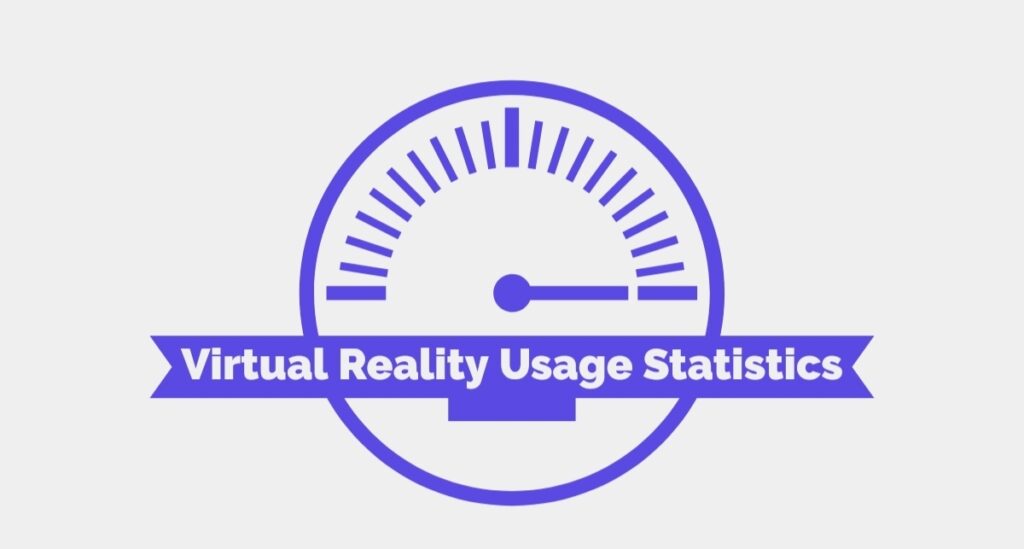
5. There are more than 170 million people worldwide who today use some form of virtual reality.
(Source: Statista)
It’s estimated that there are over 170 million people worldwide who today use some form of VR. Virtual Reality has been used for many things, from gaming to movies to education. It’s also an important tool for those who are visually impaired or blind. Many people today use virtual reality for different purposes and it’s even being used to help people get over traumatic experiences.
6. 78% of Americans are already familiar with VR technology.
(Source: IDC & GreenLight Insight)
The VR market is expected to grow in the coming years as more people are exposed to the new technology. The global VR hardware and software market was worth $2.3 billion in 2016 and is projected to reach $7.9 billion by 2022, according to International Data Corporation (IDC).
In a recent survey, 78% of Americans reported having heard of virtual reality at some point, with 94% saying they were familiar with the concept after being shown an example, such as when a 3D film is screened for them.
7. People aged between 16 to 34 are more likely to use virtual reality.
(Source: GlobalWebIndex)
According to a recent study, people aged 16 to 34 are more likely to use virtual reality. The study also revealed that people who tried VR for the first time between 2015 and 2017 were more likely to still be using it as compared to those who tried it back in 2014. The study consisted of 800 respondents from the United States. This means that the vast majority of these participants had experienced VR or owned a headset at some point in their lifetime.
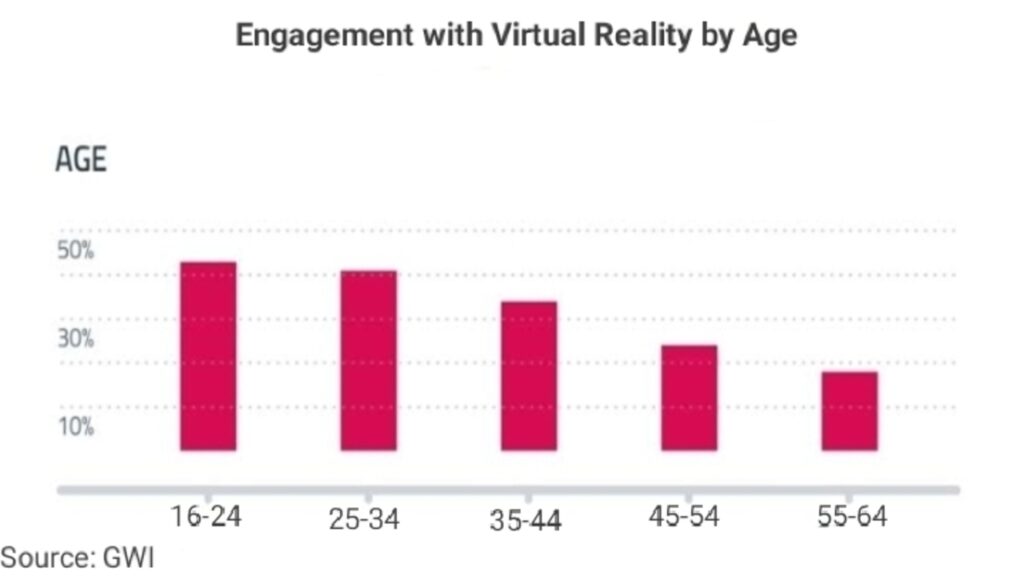
Of the 800 respondents, 35% of them said they had used VR, while only 12% said they’d never tried it before. This is an important finding because it shows that people are looking for ways to immerse themselves into virtual worlds and escape from the realities of day-to-day life.
8. 76% of the children who have used VR did it for gaming purposes.
(Source: ResearchGate)
According to a recent study, some 76% of children who have used virtual reality did it for gaming purposes. The study showed that only 17% of children played games designed for adults and only 22% had tried 3D films. It seems that what kids are into is mainly gaming and perhaps some films, with a particular preference for the horror genre.
VR has been used as an educational tool, but so far it has not proven to be particularly effective in changing habits or promoting healthy living. Some experts say that it’s too soon to judge VR’s effectiveness as an educational tool because there has not been enough time for people to really experience it and see the results.
Virtual Reality Market Statistics

9. The VR market will be worth $20.9 billion by the year 2025.
(Source: Statista)
The Virtual Reality (VR) market is forecasted to be worth $20.9 billion by the year 2025. It’s set to grow at a compound annual growth rate of 54.2% on average. This means the VR market will reach its peak in 10 years, with total revenues reaching $70 billion.
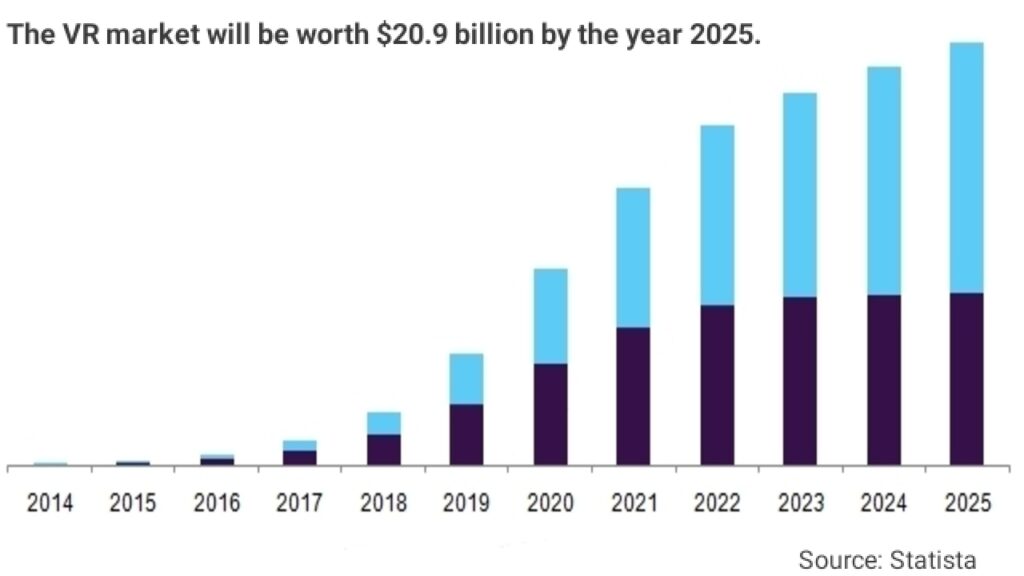
According to Statista, this trend is mainly due to new applications and services, such as VR gaming and video streaming. Today’s VR headsets are mostly designed for gaming purposes, but they can also be used for education and medical training purposes as well as therapy sessions for people with PTSD or other mental disorders.
10. Standalone VR devices will grow in demand more than 16 times between 2018 and 2022.
(Source: IDC & CCS Insight)
Standalone virtual reality (VR) devices will grow in demand more than 16 times between 2018 and 2022, according to a new IDC report. Standalone VR devices are also expected to account for more than 97% of VR units shipped during the forecast period, according to the report. These include all-in-one headsets like Oculus Go and Oculus Quest, as well as mobile phone-based devices such as the Google Daydream View and Samsung Gear VR.
The report notes that standalone VR devices have already begun to disrupt market dynamics by attracting new users, introducing new capabilities and form factors, and driving growth in adjacent markets such as location-based entertainment centres. These standalone are also helping to reduce barriers in content discovery, facilitating ease of use with intuitive user interfaces, as well as expanding content opportunities through high-quality immersive video experiences.
11. China topped the list of the biggest investors in VR at a cost of $5.8 billion.
(Source: IDC & Oberlo)
Virtual Reality is a booming industry. And with China leading the way, it’s no wonder why this futuristic technology is becoming more and more popular. China topped the list of the biggest investors in VR last year as they spent around $5.8 billion on this technology. What’s more, China’s investment in VR is only going to grow as Chinese companies are beginning to invest in virtual reality for their own entertainment and economic purposes.
There are many reasons why China is such a strong player in the VR industry. The country has a booming technological sector, which has gone from being the back-end factory for international tech companies to become one of the world’s largest players in designing and producing hardware and software components for smartphones, computers, robots and other emerging technologies.
12. In 2024, it is projected that VR for training will receive $4.1 billion in investments.
(Source: Finances Online)
VR is a technology that offers an immersive experience and has been used for various purposes, including video games, 3D films, and medical therapy. VR for training will receive $4.1 billion in investments by 2024. This is because the potential of this technology is limitless. From safety training to military simulations, VR allows people to learn more efficiently than any other mechanism before.
13. There has been a 14% increase in VR startups in less than one year.
(Source: TechCrunch)
According to research, there has been a 14% increase in VR startups in less than one year. The top cities and countries for launching VR startups are the United States, Japan, China, the United Kingdom and France. In addition, the study shows that there has been an 8% increase in AR startups over the past year. The report also notes that more than 80% of new VR startups have come from outside of California. The most popular fields for these startups are entertainment and gaming, with more than half being entertainment-focused.
Statistics on Virtual Reality Trends
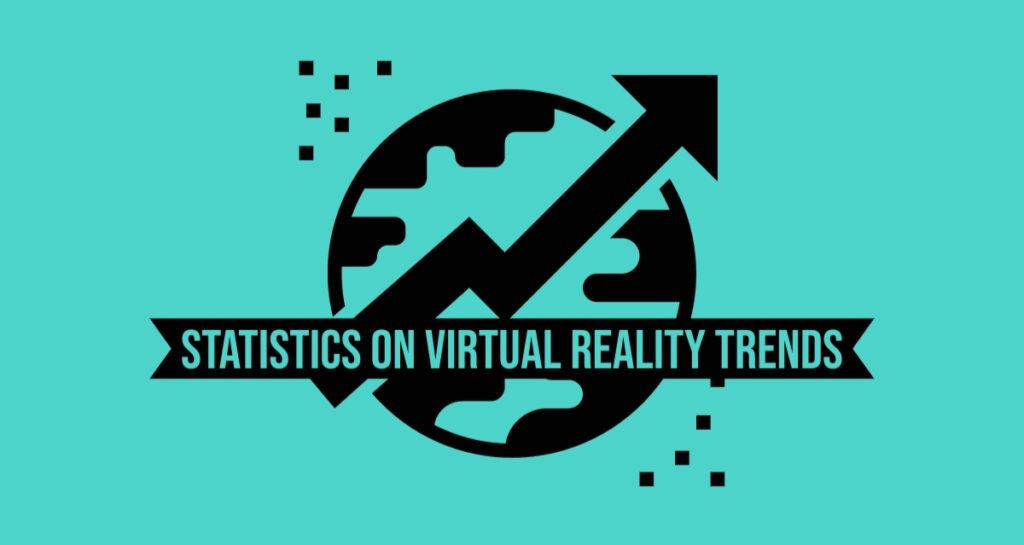
14. About 77% of customers say they need more social interaction in VR.
(Source: Forbes & GreenLight Insight)
A recent study from GreenLight Insight found that 77% of customers are looking for more social interaction in virtual reality. Researchers surveyed 500 people and found that most respondents wanted to interact with others in VR as much as they do in real life.
The study concluded that live streaming is the preferred method for providing social interaction in virtual reality, with voice chat coming second. VR isn’t just a solitary experience! If you’re going to use this new technology, make sure it’s not just an isolated experience.
15. By 2030, VR and AR could affect up to 23 million jobs.
(Source: PwC)
It’s easy to think that recent advances in technology are all for the good. But what happens when advances in technology lead to job loss? According to a report from PricewaterhouseCoopers, by 2030 there may be up to 23 million people who will lose their jobs due to automation. This is largely due to the increased adoption of VR and AR technologies, which will lead to fewer human workers required in areas such as design, marketing, and manufacturing.
Our society is currently undergoing a period of rapid change and innovation where technologies like AI and VR are becoming integrated into our daily lives. As these technologies become more mainstream, it’s important that we carefully consider the implications they have on our workforce, especially the low-skilled workers who are often most at risk of losing their jobs.
16. VR and AR together could help boost the global economy by $1.9 trillion by 2030.
(Source: PwC)
Virtual reality (VR) and augmented reality (AR) are quickly becoming the next big thing in tech. VR is used to create an immersive environment, while AR adds digital information to the world around you. These two technologies have a huge potential to boost the global economy by $1.9 trillion by 2030, according to a study released by PwC.
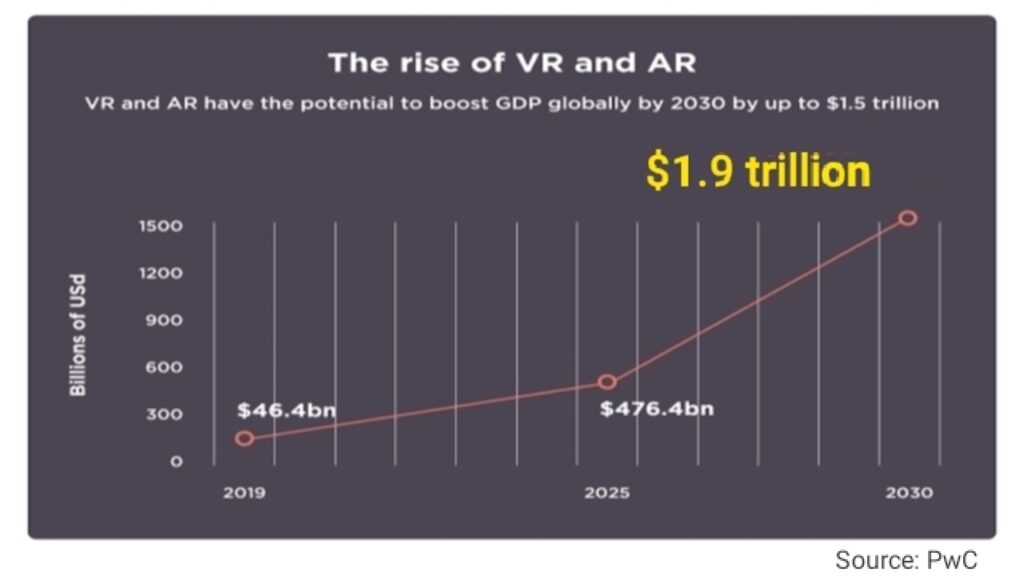
The study found that companies using AR and VR can better train employees with realistic simulations, reduce product development time by 50 percent, and even cut manufacturing costs by 30 percent. The benefits of VR and AR go far beyond saving money. They could also be used as a form of therapy for people with disabilities or obesity, helping them live more independent lives.
17. One-third of virtual reality users use their VR headset at least once a week.
(Source: Forbes & GreenLight Insight)
VR is on the rise. VR headset owners are reporting that they use their devices on a regular basis. A recent report from Greenlight Insights found that 39% of VR headset owners use them at least once a week, while 34% of owners report using them at least once a month. 18% of owners say they never use their headsets and 17% say they only used them once or twice. This data reflects the variety of ways people use virtual reality.

Conclusion
Virtual Reality is a digital environment generated by computer technology to simulate the physical presence of an individual or group within another environment.
I’m sure now you have a better idea of the direction and potential of this technology.
These Virtual Reality stats for 2024 clear one thing for sure, VR will be the massive transformation in the world of technology.
If you like the article then do share it with your friends so that they can also know the latest facts and stats of VR.
How many people use VR?
It’s estimated that there are over 170 million people worldwide who today use some form of VR. And experts estimate that around 500 million VR headsets will be sold by 2025.